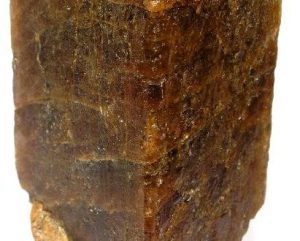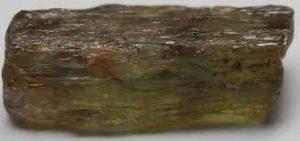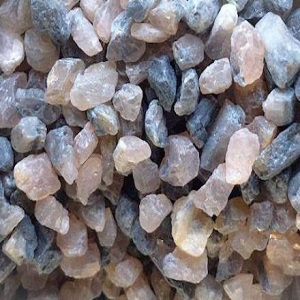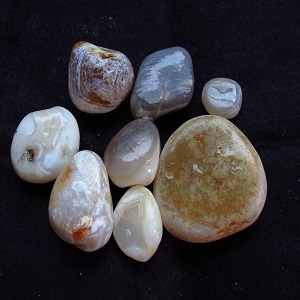Andalusite mineral

The rocks in this collection include pelitic schists, marble and schist amphibole, which are interrupted by granite masses and pegmatite veins. In general, andalusite mineral is found in metamorphic and igneous rocks with textural, geochemical and crystallographic differences. Andalusite is one of the polymorphs of aluminosilicate, which is often formed in the metamorphic conditions of medium temperature and low pressure. New experimental research shows that this mineral is also formed in magmatic and metasomatic conditions. Chemical analyzes performed with electron microprobe show that iron, potassium and REE elements are different in two types of andalusite occurrences in Deh Salam. The iron in andalusite found in igneous rocks ranges from 0.12 to 0.97% and its potassium content reaches 0.79%

In andalusite, iron transformation is 0.11 to 0.16% and potassium is very small and often less than 0.02%. Other main elements present in two types of andalusite do not show any significant difference. Andalusite crystals in the metamorphic rocks of the Deh Salem complex are seen in andalusite-bearing schists in the form of chiastolite and with oriented accumulation. This mineral is formed from pelitic rocks during progressive metamorphic reactions. The paragenesis in these schists shows the formation temperature of 380 to 450 degrees Celsius at a pressure of 2 to 3 kilobars. Andalusite found in the igneous rocks of Deh Salam complex in the margin of granite masses and pegmatites is pink in color and without carbon inclusion and unlike metamorphic types, it has no orientation. This mineral can be formed from an alkaline metalaluminum magma that has been in ion exchange with its neighboring metamorphic rocks. Examining the changes in the ratio of potassium to sodium from metamorphic halo schists to the granite mass confirms the presence of ion exchange and metasomatism between magma and intrusive rocks.
Characteristics of andalusite
Andalusite is an ore that is resistant to high temperatures. Andalusite can show shades of green, brown and red from different directions. Although it is hard enough for most jewelry uses, it is a remarkably beautiful stone that is known primarily for jewelry purchases
Andalusite is an aluminum silicate mineral that can be found in low pressure metamorphic rocks. It consists of Sillimanite and Kyanite
Andalusite is known for its ability to change color when viewed from different angles. Stone colors are due to the beauty of the face
It is named after the place where it was first discovered, Andalusia, Spain

Gem quality samples are cut into cabochons
Andalusite mines are commonly found in Sri Lanka, Brazil, France, Sweden, Russia, Spain, China, Australia, and the United States of America
Andalusite is formed during regional metamorphism of shale or oil-bearing rocks. It can be found in schist metamorphic rocks and green jade, andalusite is often associated with kyanite and sillimanite rocks
Andalusite also forms during the metamorphism of bituminous rocks. In this situation, it can be formed inside the metamorphic rock or in the veins and cavities inside the igneous rocks. It can be along with cordierite (it is one of the rare minerals) in Hornfels (it is formed due to the nearby metamorphosis of granitoids), granite and granitic pegmatite
Difficulty: 7.5-7
Crystal shape: Orthorhombic
Transparency: transparent to matte
Specific gravity: 3.1-3.2
Refraction: uneven, chip-like
Hardness: Brittle
In the group: silicates, individual tetrahedral silicates or island silicates
Transparency: transparent to opaque
Absorption spectrum: The deep green variety from Brazil shows the Mn spectrum: knife-edge shadow at 5535, fine lines at 5505 and 5475. faint lines at 5180, 4950 and 4550
Phenomena: Chatoyancy (cat’s eye), very rare
Formula: Al2SiO5 + Fe
Pleukroicism: strongly pleukroic; Olive green to fleshy red (Brazil). Usually yellow/green/red. Blue andalusite from Belgium: blue / colorless / colorless

Optics: α = 1.629 – 1.640; β = 1.633-1.644 γ = 1.638-1.650. Near colorless andalusite is reported at the lower end of this range. Green material at the upper end. Viridin: 1.66-1.69. Biaxial (-), 2V = 73-86 degrees
Optical sign: biaxial
Occurrence: Metamorphic rocks, usually slates and schists, occur as a contact mineral, or within mica schist or gneiss. Also as a detrital mineral and rarely in pegmatites and granites
Impurities: rutile needle (common); liquid components, hematite shells (Brazilian material); Carbonaceous components (Kiastolite)
Common improvements: Thermal improvement
Location: Andalusite is found in different environments, especially in metamorphosed types of cordierite, hornfels, granite and granitic pegmatite
Rock type: igneous, sedimentary, metamorphic
Gem shapes with a long axis, such as an oval, marquise or emerald cut, tend to show one color near the center and another, usually darker, color at the end
Sometimes, lapidaries pass through these stones to reveal pink and almost colorless shades. Others are cut to show the green color in the center of these stones, with brown or various other combinations at the tip, depending on the crystal orientation before cutting
Other names used for andalusite

Cross stone, Chiastolite, Viridine
Some andalusite mines
Spain, Sri Lanka, Brazil, Australia, America, Canada, Russia
How to clean andaluzite
Sensitive to steam cleaning, ultrasound may be used, preferably with cold water and soap




